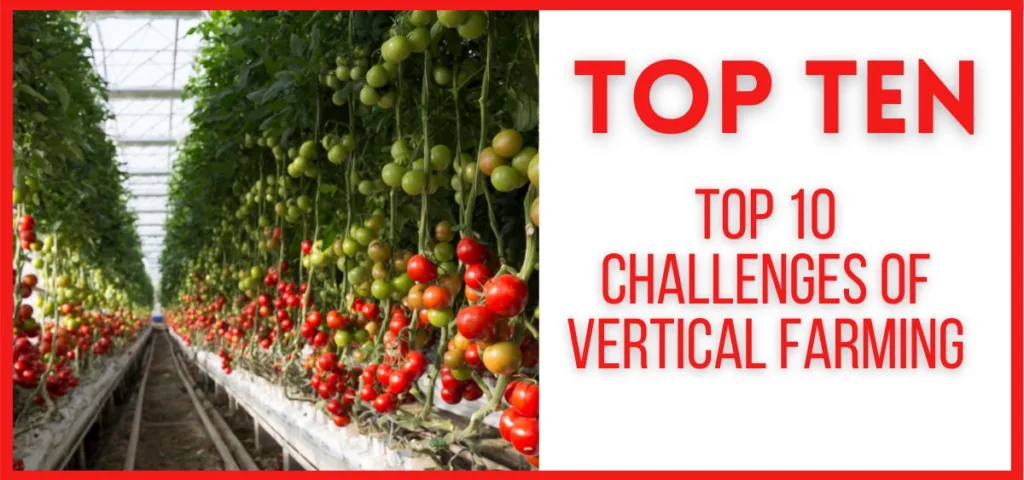Vertical farming, a revolutionary approach to agriculture, has been gaining widespread attention for its potential to transform the way we grow and consume food. Unlike traditional farming, which relies on large expanses of land, vertical farming maximizes space by stacking crops vertically. In this article, we will delve into the top 10 challenges faced by vertical farming and explore how the industry is addressing these issues.
Top 10 Challenges of Vertical Farming
Vertical farming has emerged as a revolutionary approach to agriculture, promising to produce fresh, local food in a sustainable and efficient manner. However, despite its exciting potential, this innovative method faces several challenges that hinder its widespread adoption. Here are
1. High Initial Investment
Building and operating a vertical farm requires significant upfront costs for infrastructure, technology, and equipment. These include controlled-environment systems for lighting, temperature, and humidity, hydroponic or aeroponic growing systems, and automation technology. Compared to traditional farming, the initial investment can be several times higher, posing a barrier for many potential entrants.
2. High Energy Consumption
Vertical farms rely heavily on artificial lighting and climate control systems, which consume a substantial amount of energy. This dependence on fossil fuels not only raises operational costs but also contradicts the sustainability goals of vertical farming. Finding renewable energy sources and improving energy efficiency are crucial for the long-term viability of this technology.
3. Water Management
While vertical farms generally use less water than traditional agriculture, water management remains a critical challenge. Closed-loop systems are essential to minimize water waste and ensure efficient recirculation. Additionally, treating and purifying the used water for reuse requires effective filtration and sanitation technologies.
4. Technical Knowledge and Expertise
Operating a vertical farm demands a blend of agricultural knowledge, engineering expertise, and technological know-how. Managing the complex interplay of lighting, temperature, humidity, and nutrient delivery requires specialized skills and training. The lack of a readily available workforce with these skills further hinders the industry’s growth.
5. Pollination and Pest Control
Closed-environment systems in vertical farms restrict the movement of natural pollinators like bees and butterflies. This necessitates alternative pollination methods, such as manual pollination or the use of drones. Additionally, the warm, humid conditions in vertical farms can be conducive to pest and disease outbreaks. Implementing integrated pest management (IPM) strategies and developing disease-resistant cultivars are crucial for ensuring crop health.
6. Market Acceptance and Consumer Perception
Consumers may perceive vertically farmed produce as unnatural or inferior to traditionally grown food. Building consumer trust and educating the public about the benefits of vertical farming, such as freshness, reduced environmental impact, and year-round availability, are essential for market acceptance.
7. Regulatory Hurdles
The vertical farming industry is relatively new, and clear regulations and standards are still evolving. This can create uncertainty for investors and operators, as they navigate complex permitting processes and compliance requirements. Establishing standardized regulations that ensure food safety and quality while fostering innovation is crucial for the industry’s growth.
8. Economic Viability
Currently, the high costs associated with vertical farming make it challenging to compete with traditional agriculture on price. Scaling up operations, optimizing technology, and reducing energy consumption are key to improving economic viability and making vertical farming a competitive food production method.
9. Social and Ethical Considerations
The potential social and ethical implications of vertical farming need careful consideration. The technology could lead to job displacement in traditional agriculture and raise concerns about corporate control of the food system. Ensuring equitable access to the technology and its benefits for all stakeholders is crucial.
10. Continuous Innovation and Research
Vertical farming is a rapidly evolving field, and continuous innovation and research are essential for overcoming the challenges mentioned above. Developing more efficient technologies, optimizing growing systems, and exploring new crops suitable for vertical farming are ongoing areas of focus.
Despite these challenges, vertical farming holds immense potential to transform the way we grow food. By addressing these hurdles through technological advancements, policy changes, and consumer education, vertical farming can become a key player in ensuring food security, sustainability, and resilience in the face of a growing population and a changing climate.
FAQs
What crops are suitable for vertical farming?
Vertical farming is suitable for a variety of crops, including leafy greens, herbs, tomatoes, and strawberries.
How can vertical farming reduce environmental impact?
By minimizing the use of pesticides, herbicides, and reducing land requirements, vertical farming reduces environmental impact.
Are there any government initiatives supporting vertical farming?
Some governments provide incentives and grants to promote vertical farming and sustainable agriculture.
What role does technology play in overcoming vertical farming challenges?
Technology is crucial for automation, data analysis, and creating optimal growing conditions, addressing challenges in efficiency and productivity.
How can individuals contribute to the success of vertical farming?
Supporting local vertical farms, staying informed, and advocating for sustainable farming practices contribute to the success of vertical farming.
Is vertical farming the future of food production?
Vertical farming is a promising technology with the potential to revolutionize the way we grow food. However, it is still in its early stages of development, and it is unlikely to replace traditional agriculture entirely. Vertical farming is best suited for certain crops and can complement, rather than replace, traditional farming methods.


































